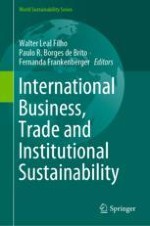This book addresses the gap between innovative technologies and their adoption. It showcases research, feasibility studies and projects that demonstrate a variety of ways to implement environmental sustainability in globally operating firms, as well as best practices in areas such as international management, adoption of cleaner technologies, global supply chains, greenhouse gas emission reduction, and transportation.
The book provides state-of-the-art information on issues including:
Global sustainable management practicesGlobal sustainable food and agricultural marketsGlobal responsible mining and energyGlobal sustainable sourcingGlobal sustainable transportationGlobal conservation innovations and investments
Presenting expert contributions from industry, government and academia, discussing a variety of themes and perspectives on the topic "international business as a positive force of environmental sustainability” it is a vital resource for stakeholders in the international business community.
